This September and October, we’re taking a look at the jam-packed 1994 to 1995 season of Star Trek, including Star Trek: Deep Space Nine and Star Trek: Voyager. Check back daily for the latest review.
The best thing that can be said about the first season of Star Trek: Voyager is that it avoids being actively terrible.
This might sound like damning with the faintest of praise, but it’s worth looking at the show in the context of its siblings. None of the Star Trek spin-offs have had illustrious first seasons, often struggling to find their feet. It’s worth noting that Voyager‘s first season doesn’t contain any episodes that are as flat-out bad as something like Code of Honour, Angel One or The Passenger. While the show has more than its fair share of problems, it’s hard to look at the concept behind any episode in Voyager‘s first season and think “this is truly bad idea.”
Of course, the logical counterpoint to that argument is the observation that the show hasn’t produced anything of equivalent quality to Heart of Glory, Conspiracy, Duet or In the Hands of the Prophets. This is perfectly legitimate criticism, and it really explains the problem with the first season of Voyager. While the show has avoided any spectacularly embarrassing decisions, it did this by completely avoiding any real risk.
The first season of Star Trek: Voyager is almost perfectly calibrated to land in the Star Trek comfort zone.
Part of the appeal of Star Trek: Voyager was taking Star Trek into (literally) uncharted territory. Breaking away from the somewhat crowded and familiar Alpha Quadrant, Caretaker thrust the eponymous ship and its crew into the Delta Quadrant. Though Star Trek: Deep Space Nine was based around a stable wormhole to the Gamma Quadrant, the Delta Quadrant was relatively unexplored at this point in Star Trek history, featuring briefly in episodes like Q Who? and The Price.
In Q Who?, the Delta Quadrant had been portrayed as a truly alien section of space, inhabited by creatures and organisms that challenge humanity’s ability to comprehend. “It’s not safe out here,” Q boasted. “It’s wondrous, with treasures to satiate desires both subtle and gross, but it’s not for the timid.” Introducing the crew of The Next Generation to the Borg, it seemed like the Delta Quadrant was worlds away from the politics and stability of the Alpha Quadrant.
There’s a sense that Voyager wants to capitalise on this. The show’s opening credits – a stunning selection of special effects shots playing out against a Jerry Goldsmith theme – portrays space as wondrous and magical. In contrast to the isolation and emptiness portrayed in the (almost mournful) opening credits of Deep Space Nine, Voyager treats space as something densely-populated with beautiful phenomena.
The problem with Voyager is that it doesn’t feel like the show is venturing into the unknown. Everything feels familiar. Shows like Ex Post Facto and Jetrel could easily have been carried over from the final season of Star Trek: The Next Generation with only a minimum of changes. The Kazon feel indistinct from Klingons. Before the end of the first broadcast season, the crew has already met a Romulan. Seska was a Cardassian. Reginald Barclay pops up as a guest star in Projections, one of the episodes carried over from the end of the first season into the second.
To be fair, the producers seemed to recognise this problem. In an interview with Ian Spelling at the end of the first season, Rick Berman conceded as much:
“I also think we need to define and create characters and civilisations in this new quadrant of space,” Berman says. “We need to take better advantage of the fact that we are in a part of space that has never been in contact with humanity or anyone from the Federation before.”
However, this seemed to make little difference. The second season would see Harry Kim returning to Earth in Non Sequitur, Q and Riker popping up as guest stars in Death Wish and a rogue Cardassian missile in Dreadnought.
However, even beyond these awkward holdovers from the earlier shows, there’s a sense that this is all just another day in the office for Janeway and the crew. “It’s so easy to become jaded, to treat the extraordinary like just another day at the office,” Janeway advises Kim at the end of Emanations, “but sometimes there are experiences which transcend all that.” The problem is that Voyager hasn’t really offered too much in the way of those transcendental experiences. Even time-and-space-bending adventures like Parallax, The Cloud and Twisted feel almost rote.
Indeed, there’s a worrying familiarity to most of the first season. Far from blazing a trail into the future, much of Voyager feels like a throwback. Faces feels like it harks back to The Enemy Within, without the sort of character work that distinguished Second Chances. The Cloud feels like it harks back to something like The Immunity Syndrome. Indeed, Caretaker embraces the idea of “the Wild West in space!” in a way that no Star Trek show has since the original.
It feels regressive, as if the show is trying to consciously hark back to classic Star Trek, with no real acknowledgement of the fact that television has come a long way. Episodic adventures magically reset at the end of the hour were perfectly acceptable in the sixties, but they feel less engaging in the nineties. Focus on plot rather than character was a staple of classic television, but The Next Generation and Deep Space Nine had already pushed Star Trek beyond that classic mold of television. In contrast, the sensibilities of the first season of Voyager feel decidedly retro.
Faces is an enjoyable b-movie of an episode, complete with all the awkward implications that one expects from a story about a multiracial crew member split in half. Jetrel and Time and Again meditate on the splitting of the atom. Cathexis feels like a bit of good old-fashioned xenophobic Cold War paranoia more than an example of anti-authority nineties paranoia. Ex Post Facto was a film noir right down to the black-and-white flashbacks. The 37’s has the crew stumbling across some literal relics of the audience’s past.
Even the scenes of Voyager landing on the planet surface in The 37’s seem to call back to the original Star Trek, a triumphant boast about how far Star Trek had come technologically since the sixties. The transporter was famously invented as a means to get the crew on to the surface of alien planets without landing the ship. Here, it seems almost like Voyager is bragging about its capacity to do things that the original Star Trek may have always wanted to do, but couldn’t.
(You could also interpret Voyager‘s eventual focus on the Janeway/Seven/Doctor trio and rejection of the ensemble as part of that nostalgia for classic Star Trek. If one accepts that Seven fills the “Spock” niche in the cast, the triumvirate matches that of the original Star Trek quite closely. Of course, it also seems to gloss over the fact that this model of science-fiction adventure felt decidedly outdated in the mid-to-late nineties.)
In essence, the show is traveling well-worn ground, rather than trying to force its own path. To be fair, this is par for the course with a new Star Trek spin-off. Much of the first season of The Next Generation was trying to be the fourth season of classic Star Trek. Much of the first season of Deep Space Nine was spent trying to mimic The Next Generation. The problem with Voyager is that that show never seemed to grow past this phase of its existence.
This is particularly frustrating because Voyager probably has the most interesting starting premise of any Star Trek spin-off. It’s the show most clearly driven by a central purpose. Sure, Deep Space Nine charged Sisko with inducting Bajor into the Federation, but that objective quickly faded to the background as it was replaced by more urgent concerns. However, the idea of a lost starship on the far side of the galaxy staffed by two different crews is a fascinating starting point for a Star Trek show.
In his infamous exit interview from the franchise, Ronald D. Moore argued as much, taking Voyager to task for its reluctance to embrace what made it all so interesting:
I’ve said this to Brannon for years, because he and I would talk about the show when it was first invented. I just don’t understand why it doesn’t even believe in itself. Examine the fundamental premise of Voyager. A starship chases a bunch of renegades. Both ships are flung to the opposite side of the galaxy. The renegades are forced to come aboard Voyager. They all have to live together on their way home, which is going to take a century or whatever they set up in the beginning. I thought, This is a good premise. That’s interesting. Get them away from all the familiar Star Trek aliens, throw them out into a whole new section of space where anything can happen. Lots of situations for conflict among the crew. The premise has a lot of possibilities. Before it aired, I was at a convention in Pasadena, and [scenic illustrator, technical consultant Rick] Sternbach and [scenic art supervisor, technical consultant Michael] Okuda were on stage, and they were answering questions from the audience about the new ship. It was all very technical, and they were talking about the fact that in the premise this ship was going to have problems. It wasn’t going to have unlimited sources of energy. It wasn’t going to have all the doodads of the Enterprise. It was going to be rougher, fending for themselves more, having to trade to get supplies that they want. That didn’t happen. It doesn’t happen at all, and it’s a lie to the audience. I think the audience intuitively knows when something is true and something is not true. Voyager is not true. If it were true, the ship would not look spick-and-span every week, after all these battles it goes through. How many times has the bridge been destroyed? How many shuttlecrafts have vanished, and another one just comes out of the oven? That kind of bullsh!tting the audience I think takes its toll. At some point the audience stops taking it seriously, because they know that this is not really the way this would happen. These people wouldn’t act like this.
Moore would go on produce the rebooted Battlestar Galactica, which he conceded was pretty close to his vision of Star Trek: Voyager. While a lot more militaristic and adult than Star Trek, it certainly felt more honest than the Star Trek show that débuted in 1995.
The betrayal of the premise was pretty profound, as Moore has noted. The mission home seemed like a secondary concern in most of the episodes. Shows like The Cloud and Phage would make passing reference to issues of resource scarcity and management – however, these never seemed to amount too much. There’s a sense that Janeway could return to the Alpha Quadrant at the end of the first season and still get back the metaphorical deposit on her Intrepid-class starship. (It’s easy to imagine Voyager still has that new starship smell, and certainly isn’t “lived in” yet.)
It’s worth noting that Deep Space Nine offers a harsher living experience than Voyager, despite being located at the nexus of Alpha Quadrant politics and relatively near a friendly planet. O’Brien seems to live under more pressure than Torres, more likely to have to improvise or repair on the fly just to keep the machine ticking over. Voyager feels like there isn’t so much as a scratch on the paintwork yet. Even when the Caretaker almost destroys the bridge, it looks fine by the end of the next episode.
There’s also no real sense of isolation to the voyage. The holodeck allows the crew to visit Earth any time they want, whether Paris’ twenty-fourth century France or Janeway’s costume drama or Harry Kim’s European folktale epic. The crew get their first life-line to the Alpha Quadrant in Eye of the Needle, but it feels like they haven’t been gone long enough for the episode to mean as much as it might otherwise.
The integration of the crews was problematic. Outside of Parallax, Prime Factors, State of Flux, and Learning Curve, the conflict between the Maquis and Starfleet crews are minimised. Even then, the only hint of conflict between the senior staff on the issue occurs in Parallax and Prime Factors. Chakotay falls into line pretty quickly, and Torres becomes quite agreeable almost as fast. Similarly, it seems like everybody who had a problem with Tom Paris serving on the ship was was conveniently killed off in Caretaker.
To be fair, the producers seemed divided on this. Brannon Braga argued that The 37’s was a turning point for the series because the crew stopped moping about getting home. In contrast, Michael Piller still regretted the betrayal of that basic premise when interviewed for his retrospective feelings towards Voyager:
The one thing that I look back on and think would have made the series more interesting would have been to keep more conflict going between the Maquis and the Starfleet characters, at least during the first season or two. I think there was an opportunity missed early on to slowly create a group of characters that had to grow to know and trust one another. Because of those concerns, we essentially solved the conflicts and they were a pretty bonded crew probably from episode three or four on.
While Piller is correct here, it’s worth noting that his attempts to anchor the second season’s storytelling arcs on the Kazon and Maquis would be responsible for some of the more glaring flaws with the second season – ironically creating the sense that Voyager wasn’t moving fast enough, or even moving in reverse.
Of course, on the other hand, producer Rick Berman was actively trying to minimise conflict between the characters in the cast. Quoted in Where No One Has Gone Before: A History in Pictures, Berman contended:
We wanted to get the Maquis into Starfleet uniforms, with a captain who had to pull together diverse groups of people into a functioning, solid, effective unit. It would get pretty irritating, and cumbersome, to have the Maquis tension in every episode.
Berman may have a point, but he’s also misrepresenting the situation somewhat. It would be nice to have the Maquis tension among the primary cast in any episode outside the first two. Chakotay never seems conflicted about his relationship with Starfleet, and the issue is pretty much resolved by the time the credits role on Parallax, the show’s second episode. There was not even a remote chance for the Maquis conflict to get dull or overused.
Looking at the season, it seems quite possible that the first season suffered from the lack of a strong creative hand. Piller had begun to move away from Star Trek during this period, most likely due to the studio’s decision not to involve Piller directly in the production of Star Trek: Generations. He was invited to pitch for the film, which put him in an awkward position of competing against his own writers, as Piller himself magnanimously noted in his memoir, Fade In.
Piller moved away from Deep Space Nine in its third season, and departed Voyager midway through its first. Indeed, the last two scripts of the season featuring work from Piller were Prime Factors and State of Flux, the flawed duology in the middle of the season exploring the realpolitick of the Delta Quadrant. While the finished episodes were quite flawed, they at least demonstrated a willingness to engage with the show’s unique premise. (As did The Cloud, for all its flaws.)
Although it should be conceded that Piller’s other credited scripts this season – including Time and Again and Ex Post Facto – count among the most episodic and generic Star Trek writing of the year. Piller was also the major proponent of the Kazon on the writing staff. As such, it’s clear that Piller’s influence on Voyager was not unambiguously good. Still, he had a very clear vision of where he wanted to take the show. In what will become a recurring trend for executive producers on Voyager, he never quite got to realise it.
When Piller left midway through the season to launch his new UPN series Legend, Voyager seemed to stumble a bit. While Jeri Taylor had worked on the franchise from the fourth season of The Next Generation, it didn’t seem that she was quite ready yet to handle showrunning on Voyager – certainly not taking over day-to-day management of the writers’ room midway through the first season. (Taylor would do a lot better when Piller handed the reigns over at the end of the second season.)
The second half of the first season is a mess. Many of the show’s weakest episodes populate that section of the season – the most obvious being Twisted. Writer Kenneth Biller was recruited on to the staff on the strength of his re-write of Elogium, but the recruit found himself doing a lot work on scripts towards the end of the season. All of Biller’s teleplay credits are on four of the final seven episodes produced in the season. That’s one heck of a trial by fire for a new staff member. (Biller would go on to become invaluable to the show, and his work on Faces makes for one of the better flawed scripts of the season.)
There is an argument to be made that Voyager simply arrived at the wrong time. The Next Generation had arrived at a point where network television had a relatively small amount of science-fiction. Thanks to the success of The Next Generation, the genre really took off in the nineties – television became saturated with science-fiction shows. More than that, Voyager wasn’t just competing against new shows like Sliders or The X-Files or Babylon 5. It was competing against Deep Space Nine and re-runs of The Next Generation. It was entering a market place saturated with Star Trek.
Brannon Braga has openly questioned the wisdom of going straight from The Next Generation into Voyager while Deep Space Nine was still on the air:
Personally, with Deep Space Nine, I don’t think Voyager should have come on the air so quickly. I think Deep Space Nine should have been on its own for a while.
Do think it was pushed out too fast?
I think it was, for want of better words.
There’s a part of the first season of Voyager that feels like it is simply being written as the eighth season of The Next Generation. Concepts could be lifted rather easily from one show to the other.
However, the simple reality is that the producers had little say about when a new show would début. Even Rick Berman, the producer overseeing the franchise, has contended that Voyager went into production because Paramount wanted it for UPN:
It was difficult. We had just ended TNG and DS9 was in its third year, and they immediately wanted another show to take the place of TNG. We asked them to wait a couple of years. They said, “We have all these time slots available. We don’t want to lose them.” They felt very strongly about a new series. The fact that TNG, a ship-based show, was going off the air and that we had a space station-based show on the air, meant that the obvious thing to do was create a new ship, which we did with the Voyager.
A new Star Trek show was always going to happen. Voyager was really inevitable.
It is hard to talk about Voyager without talking about UPN. Indeed, the show is so firmly linked to the network that Caretaker was the first program broadcast on UPN. Voyager was the only series from that first evening of programming to secure itself a second season. Other casualties from that brutal first broadcast season included Michael Piller’s science-fiction western Legend. Airing on a network that aimed to be truly national, Voyager was subject to a lot of the pressures that The Next Generation and Deep Space Nine never had to worry about in syndication.
So the studio meddled with Star Trek: Voyager. Not quite to the extent that they would with Star Trek: Enterprise, but certainly more than they had with Star Trek: The Next Generation or Star Trek: Deep Space Nine. The most glaring examples – the addition of Seven of Nine and the removal of Kes – are yet to come, but the influence was apparent even from the first season. Most obviously, four broadcast episodes – Projections, Elogium, Twisted and The 37’s – were carried over to the second season against the wishes of the production team.
UPN itself was a product of desperation. As Robert Abelman and David J. Atkin explain in The Televiewing Audience: The Art and Science of Watching TV, UPN emerged due to larger changes in the television industry of the nineties:
WB and UPN were created out of the cynical, fragmented 1990s, embodying a narrow, defensive, business tactic. Reacting to the recent repeal of federal regulations that banned networks from producing more than a portion of their own programming, ABC, CBS, and NBC were all rushing to get into the production business. … Both Warner Bros. and Paramount studios produced many programs for these networks and feared that the networks would eventually cancel these programs in favour of their own. They believed that they had no choice but to go into the network business in order to find an outlet for their programs and to stay competitive in the television industry. They began operation with a handful of evening programs in January 1995, none of which came close to reaching the 50 top-rated programs of the season.
The first season of Voyager was the most successful show to air during UPN’s first year – and one of very few to get renewed for a second season. However, Voyager‘s fate would be tied with that of the network.
The show would be at the mercy of the network’s demographics. In the first season, Voyager was safe as the strongest show broadcast on the network. Indeed, it was the highest-rated show broadcast on either of the “mini” networks, UPN or WB. However, UPN would begin to aggressively carve out a niche for itself where Voyager became less-and-less important to its overall scheduling. (Indeed, Voyager didn’t even get a retrospective from the network at the end of its seventh season.)
While Voyager arguably suffered from being broadcast on a young network that could reach less than three-quarters of the country, the real problems would begin when the network’s focus began to drift away from the show’s comfort zone. Still, that’s all in the future, even if the first season makes it clear that the relationship between the producers and the studio would be quite different from what had came before.
It’s worth pausing to reflect on the cast of this new Star Trek show. Janeway is a somewhat troubled character. There’s a legitimate criticism that the writing staff could never quite agree on the character. Michael Piller’s version of Janeway was distinct from that of Jeri Taylor, which was distinct from that of Brannon Braga. The character didn’t seem to move anywhere over the course of the show’s seven seasons. Instead, she jumped around depending on the whims of the writers.
In a way, this probably harks back to Voyager‘s strange fixation on the original Star Trek. After all, Kirk was hardly the most consistent character until the movies. Much of what we take for granted about Kirk (beyond being an action adventurer and womaniser) is only really defined in Star Trek: The Motion Picture, Star Trek II: The Wrath of Khan and Star Trek III: The Search for Spock. However, Kirk was a television character rooted in the sixties. Janeway is the protagonist of a nineties television show. There’s no excuse for her inconsistency.
There are flashes of a consistent character offered throughout the season – although they aren’t necessarily the most dynamic or heroic. In Caretaker, we’re told that she was a former science officer. In episodes like Heroes and Demons and Parallax, Janeway seems more excited about strange phenomenon than engaged with her crew. She has a tendency to completely ignore what is happening on the ship – being blind to Tuvok’s mutiny in Prime Factors and locking herself away in the holodeck in Cathexis and Learning Curve.
In episodes like The Cloud, Janeway stresses the professional distance necessary to do her job. It’s worth noting that she puts more emphasis on this distance than other characters. Kirk holidayed with McCoy and Spock in Star Trek V: The Final Frontier. Picard frequently invited other characters to join him on the holodeck – Crusher and Data in The Big Goodbye, Troi in Pen Pals, Data in The Defector and Devil’s Due and so on. Sisko cooked meals for his staff and took them to baseball games on the holosuite.
In contrast, Janeway spends a minimum of time engaging with her crew – her personal conversation with Kim at the end of Emanations and her meditation with Chakotay in The Cloud are the exception. When Janeway goes to the holodeck, she goes alone. When asked about fraternisation, she states that plans to remain loyal to Mark in the Alpha Quadrant. (In contrast, Kim is going on holodeck dates with the Delaney Sisters.) Janeway seems isolated and remote – perhaps the closest that the show comes to dealing with the isolation and loneliness in the Delta Quadrant.
This is an interesting angle for the character – portraying her as a scientist to Kirk’s action hero or Picard’s diplomat or Sisko’s builder. The idea that Janeway might have risen through the science division rather than being prepared for command is an interesting one. After all, Voyager was on a relatively short mission into the Badlands, it makes sense that the assignment wouldn’t need a particularly experienced command officer. However, this version of Janeway seems at odds with later portrayals, and it seems unlikely it was the version Jeri Taylor wanted.
At the end of the first season, the rest of the cast seem woefully under-developed. Tuvok is perhaps the most interesting character – the franchise’s first fully Vulcan regular. His devotion to logic does seem to set him against his colleagues – his somewhat hazy rationalisation of mutiny in Prime Factors and his disagreements with Chakotay and Torres in Twisted. He’s a character who manages to generate some sense of conflict in an ensemble where inter-personal conflict evaporates instantaneously.
The relationship between Neelix and Kes is particularly uncomfortable, and it’s strange that the production team chose to keep it around until the third season. Ignoring the “Kes is barely two” side of things, Neelix comes across as an abusive boyfriend. He’s manipulative and condescending towards Kes. The fact that the show seems play these moments as comedic is a little unsettling, but also unsurprising. Despite the decision to put a female character in command chair, it would appear the franchise is still a bit behind the curve when it comes to gender issues.
The rest of the cast seems to fade into the middle. Chakotay is an unfortunate collection of new age mysticism clichés rather than a character in his own right. (For a rebel, he’s a pretty straight arrow.) Torres has potential, but gets little focus. Ensign Harry Kim is just sort of there. The Doctor is the show’s breakout character, but the first season is on the cusp of that realisation. There is no sense of any relationships or dynamics on the ship. Everybody gets along, but in a generic sort of way. There’s not even any bad blood towards Tuvok, the spy on Chakotay’s ship.
Re-watching the first season of Voyager, it’s striking how Tom Paris seems to be positioned at the centre of the cast. Most characters have a couple of connections to other members of the cast. Torres served with Chakotay. Tuvok is an old friend of Janeway. Kes dates Neelix. However, Paris seems to be the character with the most connections to the rest of the cast. He even serves as the central character of Caretaker, the viewpoint character with the strongest arc in the pilot.
Barring Torres and Tuvok, Paris connects with the rest of the cast. Janeway served with his father. He served with Chakotay, who mistrusts him. He was the first assistant to the Doctor. He is best friends with Harry Kim. He is romantically interested with Kes. Neelix is jealous of him. Whereas Janeway and Kim have their own private holodeck simulations, it’s Paris who designs the bar that serves as the informal hub of Voyager during the first couple of seasons. (Which admittedly, is pretty gratuitous – surely the mess hall works fine for “crew relaxing” scenes?)
Paris was something of a bone of contention among the Voyager staff. Piller was apparently quite fond of the character’s dysfunction and rough edges. Piller wrote Ex Post Facto, in which Paris’ affair with a married woman almost gets him killed. Piller would also be responsible for the character’s arc during the show’s second season – which consciously played up Paris’ rebel tendencies. In contrast, Jeri Taylor and Robert Duncan McNeill seemed to prefer a softer approach to the character, smoothing the rough edges out a bit – portraying him as a more traditionally heroic lead.
Still, it is slightly frustrating that the white male American character effectively serves as the gateway into Voyager. Voyager has the most diverse ensemble of any Star Trek show that isn’t Deep Space Nine, and the strange positioning of Tom Paris as the lead of the pilot and the character with the strongest connections to the rest of the cast. As The AV Club noted:
Voyager’s crew is a diverse spread of untested sailors: In addition to Paris and Chakotay, there’s the fresh-faced recent Academy graduate Ensign Harry Kim; the Latin human-Klingon hybrid B’Elanna Torres; ostensibly the first Ocampa to leave her home planet, Kes; the rogue Delta Quadrant loner Neelix; and an unnamed holographic doctor designed for use in the case of emergency. The most experienced officers are black Vulcan security officer Tuvok and Captain Janeway herself. In fact, it’s the white male crewmembers, the first officer and the human doctor, who get killed in the Caretaker’s intervention. Which makes it all the stranger that the first female captain of a Star Trek series is introduced through the eyes of a straight white male.
It’s just one of the more paradoxical elements of Voyager, a series that frequent seems at odds with itself. Venturing into new territory while feeling decidedly old-fashioned; offering a diverse ensemble and focusing on the straight white man; setting up a bold premise and fascinating character dynamics and ignoring them completely.
To be fair to Voyager, as noted above, the first season isn’t really bad. Certainly, it holds up a lot better than that show’s troubled second season. Voyager certainly had a stronger first season than The Next Generation and there’s a credible argument to be made that it had around the same average quality as Deep Space Nine its first year, if not slightly higher; even if it did not meet the same highs. This is a reasonable defense of the first season of Voyager.
However, there are significant differences between Voyager and The Next Generation. The Next Generation arrived in a world starved of televised Star Trek and with a minimum amount of televised science-fiction. Hunger is a great sauce. Between The Next Generation and Deep Space Nine, there had been nine-and-a-half-seasons-worth of televised Star Trek produced in the seven years leading up to Caretaker. There was no sauce to help this go down easier.
Voyager was produced at the peak of Star Trek‘s popularity. In 1994 and 1995, it seemed like there was nothing the franchise couldn’t do. In that light, and with all the other concerns and pressures facing down on Voyager, it’s easy to see why the show chose the path of least resistance. Unfortunately, it was also the path that led towards inevitable decline and cancellation.
You might be interested in our other reviews from the first season of Star Trek: Voyager:
- Caretaker
- Parallax
- Time and Again
- Phage
- The Cloud
- Eye of the Needle
- Ex Post Facto
- Emanations
- Prime Factors
- State of Flux
- Heroes and Demons
- Cathexis
- Faces
- Jetrel
- Learning Curve
Episodes produced during the first season, but carried over to the second:
Filed under: Voyager | Tagged: Brannon Braga, deep space nine, Jeri Taylor, ken biller, Michael Piller, Network, star trek, star trek: voyager, upn, voyager |



















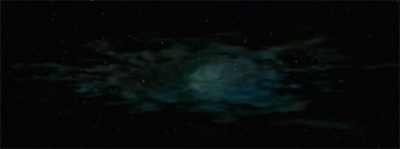



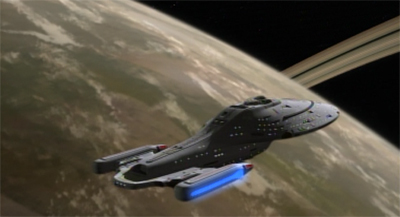
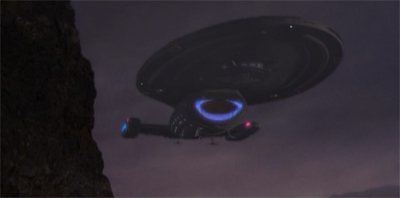









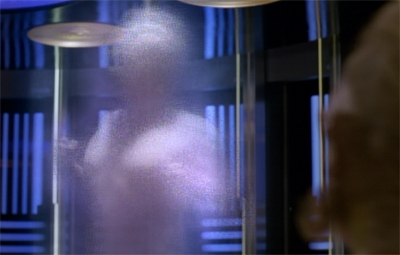




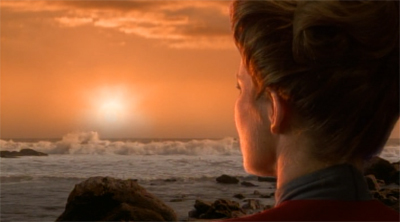
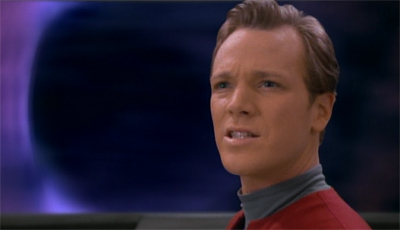
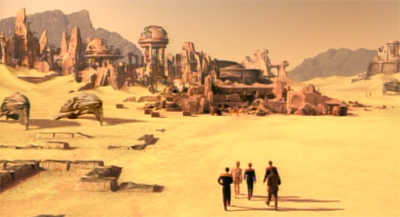
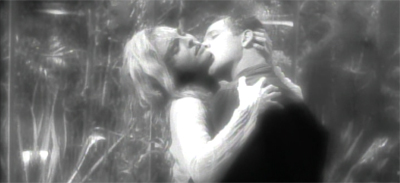
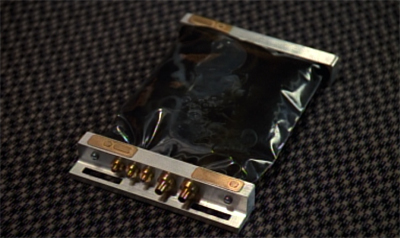






A very interesting review. I think you are spot on about the series coming out at the wrong time – quite apart from the change from the episodic to serialisation (which was happening everywhere in the 90s; ‘Friends’, with it’s love of multiple episode arcs is much more serialised and continuity obsessed than most sitcoms from even a decade earlier) ‘Voyager’ was challenged by the glut of sc-fi and the subsquent rise of fantasy television.
One thing I will say is that ‘Voyager’ grew into itself very early. The heights it reached were not very high but I can watch a first season episode as easily as a seventh – unlike ‘The Next Generation’ where I find anything with clean shaven Riker unwatchable.
Yep. I do think the second season is a little ropey, with the worst of Voyager’s episodes, but – even then – the quality ratio is reasonably high. I Voyager may have had lower highs than the rest of the franchise, but it had higher lows. I dislike Investigations, Threshold, Spirit Folk and Fair Haven, but there’s nothing as soul-crushingly terrible as And the Children Shall Lead/Angel One/Code of Honour/The Neutral Zone/The Last Outpost/Up the Long Ladder/Let He Is Without the Sin…/Profit and Lace/The Emperor’s New Cloak/Precious Cargo/Bounty/Bound.
It is a little hard for me to put into words the morbid majesty of VOY, but I will try.
When you watch it, you’re immediately struck by how expensive and yet low-rent VOY feels at the same time. There’s a still a gold standard of special effects to be met. But the actors are often pretty bad – even to someone like me, who does not obsess over such things. And everybody seems a little too cute. The stars are banging on with their Shakespearean soliloquies as the guests actors stand there, with hooded eyes and Tom Baker inflections, fully aware that yes: this is crap. Harry Kim, already the third wheel by this point, becomes little more than a one-note joke that everyone has a kick at eventually. He’s on the bridge because.. there’s always an ensign! Suits me! He’s Anti-Worf: instead of giving pessimistic estimates that turn out to be right, he gives positive outlooks that turn out to be wrong! His uselessness becomes a shared joke between the writers and the viewer.
And yet I do like the show. At it’s best, the show had a wry awareness of Trekdom that the other shows lacked. Not to be mistaken with fanwank – a distorted impression of what executives *think* Trekkies are craving to see (everyone on ENT looks like they belong in adult film). Part of the problem with the first two seasons was that Piller was writing for TNG.
I always suspected that Enterprise may have been the franchise’s second chance at redemption with another Starfleet vessel exploring a then unknown quadrant but with a ship where not everything works and there is yet to be a United Federation of Planets. This sounds like what Voyager wanted to be initially but it didn’t pan out for either series.
Are the Voyager crew more diverse than the original Darren, which included Spock, Sulu, Scotty, Chekov, and Kirk and McCoy filling out the rest.
Picard didn’t invite Data along in The Big Goodbye; Data invited himself, but Picard did invite Beverly and Whalen, the ship’s historian.
Well, to be fair to TOS, the three credited leads are William Shatner, Leonard Nimoy and DeForrest Kelley. Three white guys. Sulu, Chekov and Uhura are very much background players; I’d argue that they’re all less developed than Harry Kim or Travis Mayweather as far as the original three seasons go. I’d go so far as to argue that the TOS crew were not a true ensemble until Star Trek III: The Search for Spock, when Leonard Nimoy’s absence forced the production team to share the love somewhat.
And that’s a good spot on Enterprise being “Voyager, Mark II”, actually. Never twigged that, but you’re entirely right.
I’ve got to say, reading about UPN coming about “out of the cynical, fragmented 1990s, embodying a narrow, defensive, business tactic” certainly reads differently in the streaming age and in the lee of the WGA/SAG-AFTRA strikes, especially when one considers the mess that Paramount+ seems to have been for the Star Trek franchise.
(Prodigy who?)
A Paramount-based broadcaster speaking to the messiness of a certain cultural shift in the way television is consumed? Truly every old idea is new again.